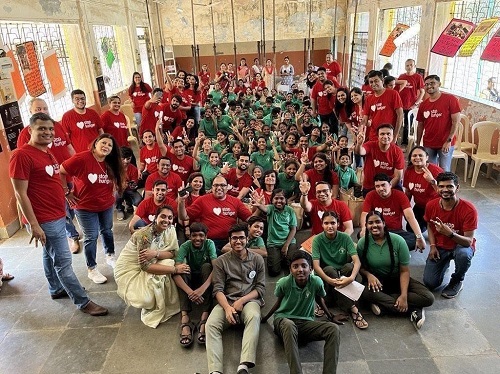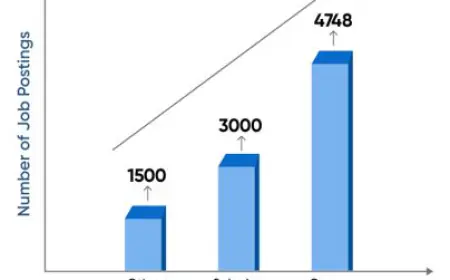Child-centred climate action cannot wait: Lancet Countdown report
Geneva (Switzerland) June 7: The urgency of the climate crisis and its effects on child health are undeniable. According to the latest annual report of the Lancet Countdown on health and climate change, 2023 saw the highest global temperatures in over 100 000 years. Infants younger than 1 year, who are particularly vulnerable to extreme heat, [...]

Geneva (Switzerland) June 7: The urgency of the climate crisis and its effects on child health are undeniable. According to the latest annual report of the Lancet Countdown on health and climate change, 2023 saw the highest global temperatures in over 100 000 years.
Infants younger than 1 year, who are particularly vulnerable to extreme heat, were exposed to 8·4 days of heatwave annually in 2013–22 compared with 4·0 days in 1986–2005. In 2022, more than 27 million children faced acute food insecurity because of extreme weather in countries heavily affected by the climate crisis, and UNICEF estimates that 739 million children were exposed to high or extremely high-water scarcity. As a result, children are at increased risk of dehydration, malnutrition, life-threatening infections (eg, dengue, malaria, vibriosis), among many other adverse health effects, with lifelong consequences on their physical and mental wellbeing and human capital.
Despite being at high risk due to their unique physiology, cumulative exposure over the lifecourse, and social vulnerability, children and adolescents have been largely ignored in the climate response. Young people’s concerns about climate change and their leadership in activism stand in stark contrast to the way they are considered in climate-related policy, financing, media coverage, and discourse. According to UNICEF, only 2·4% of key multilateral climate funds support projects incorporating child-responsive activities. In Kathrin Zangerl and colleagues’ analysis of national climate adaptation policies from 160 countries, only five (3%) are taking substantial steps to include child-specific measures. Most countries largely overlook (111 [69%]) or fully neglect (44 [28%]) child-related needs. Where children’s needs are considered, the focus tends to be on education, awareness raising, community engagement, and nutrition, with particularly little attention to middle childhood (6–12 years).
Notably, no country’s climate adaptation policies addressed children’s mental health needs directly—a huge mismatch with the widespread climate anxiety and dissatisfaction with government responses among adolescents. Children are also oversimplified in these policies, often conceptualised solely as vulnerable and needing protection, and typically universalised with little consideration of ages, developmental stage, genders, social roles, and agencies. As a result, many adaptation measures are directed at actors related to children (eg, caregivers, educators, health professionals) rather than empowering children’s autonomy and participation.
These gaps should prompt immediate and bold action to integrate the needs of children and adolescents in the climate response. The UN Convention on the Rights of the Child stipulates children’s right to participate in decisions that affect them. Children should therefore be viewed as needing both empowerment and protection, and as active co-creators in policy development (eg, via consultative processes, participatory frameworks, ideation and design thinking exercises, and adolescent-led initiatives). Children and young people’s creativity, capabilities, and agency should be respected and valued—such meaningful participation in decision making is essential to uphold intergenerational justice, improve social cohesion, and create more egalitarian communities. Adolescents’ engagement in climate-related policy can also be a helpful way of coping with climate anxiety, which should not be pathologised but instead be recognised, validated, and acted upon.
The clock is ticking, and the cost of inaction is high. Years of insufficient action have put the world on track to almost 3°C of heating, and further delays in action would risk worsening every tracked health dimension as the climate changes. Political commitment and investments are needed to accelerate progress to shift away from fossil fuels, expedite mitigation, and deliver adaptation for health—with children and adolescents at the heart. A new report by the Partnership for Maternal Newborn and Child Health (PMNCH) urges large-scale and immediate investment to increase the capabilities and wellbeing of adolescents, with two key priorities being mental health prevention and treatment, and preparation to cope with emerging realities such as climate change. While such investments are necessary, governments must not forget that the root cause of children living in and inheriting a degrading world can be traced to the fossil fuel and other health-harming industries. They must take these warnings seriously and commit to an ambitious and steadfast plan to deliver on health-promoting climate action.
The challenges of the climate crisis are obvious, but so is the case to prioritise children and adolescents in countries’ climate adaptation plans. Children have the biggest stake in climate action—let’s act like it stated the latest annual report of the Lancet Countdown which is an international research collaboration that independently monitors the evolving impacts of climate change on health, and the emerging health opportunities of climate action.
If you have any objection to this press release content, kindly contact pr.error.rectification@gmail.com to notify us. We will respond and rectify the situation in the next 24 hours.








































































































